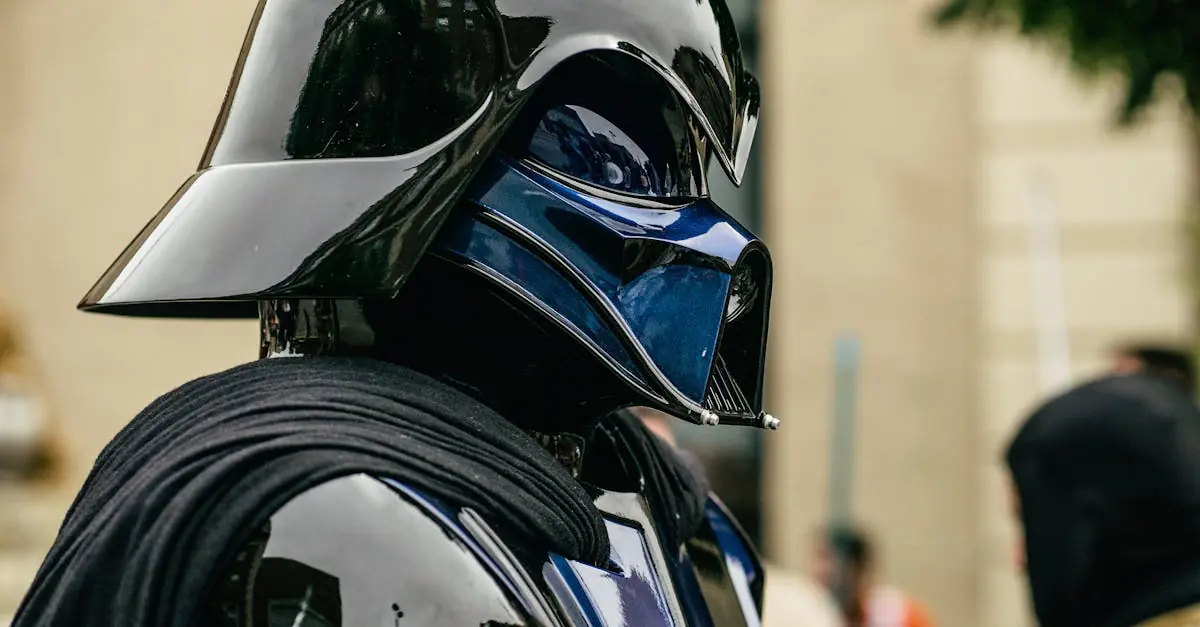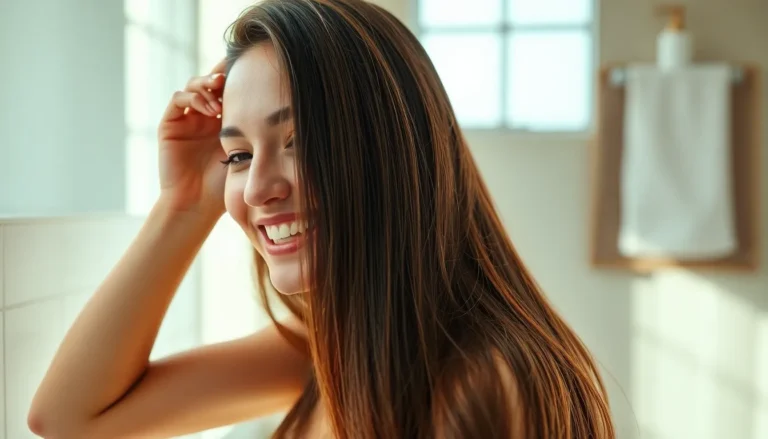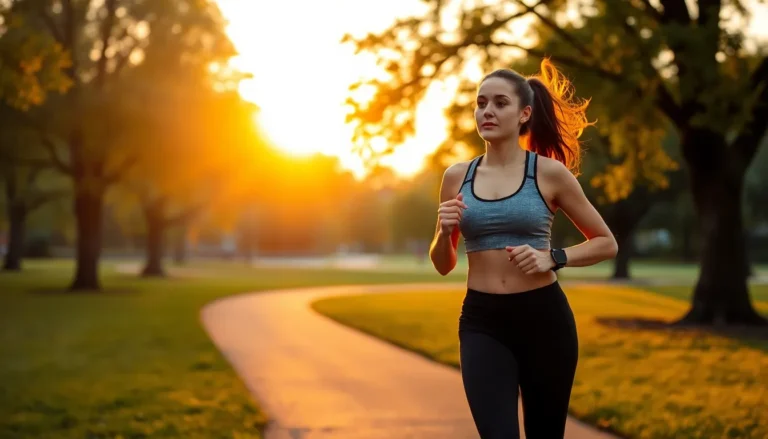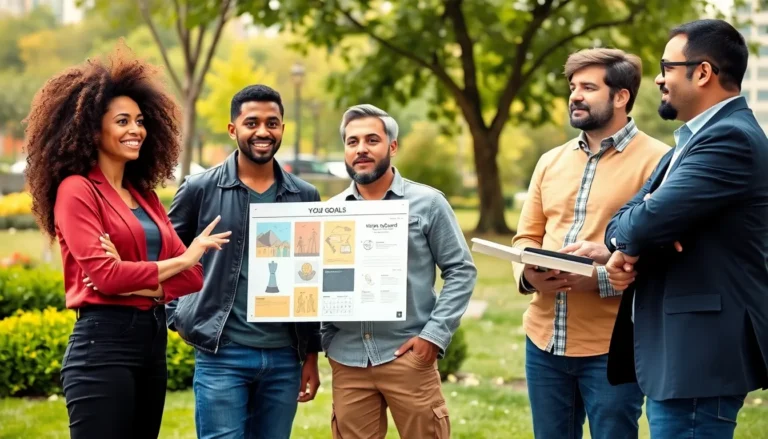Table of Contents
ToggleWhen it comes to movies, heroes might get all the glory, but let’s be real—it’s the villains who steal the show. From sinister laughs to diabolical plans, these characters keep audiences on the edge of their seats, proving that a dash of evil makes everything more exciting. Whether they’re plotting world domination or just trying to steal a little jewelry, movie villains bring a unique flair that heroes can’t match.
In this article, we’ll dive into the thrilling world of movie villain rankings. Get ready to explore the most iconic baddies who’ve graced the silver screen. From the charmingly wicked to the downright terrifying, these villains have left a mark that’s impossible to forget. So grab your popcorn and prepare for a journey through the dark side of cinema, where the bad guys reign supreme.
Understanding Movie Villain Rankings
Movie villains play a critical role in shaping narratives and engaging audiences. Their presence often elevates the stakes, making stories more compelling and entertaining.
Importance of Villains in Cinema
Villains serve as essential foils to heroes, highlighting moral dilemmas and internal conflicts. Their complex motivations add depth to plots, creating tension that captivates viewers. Characters like Hannibal Lecter and the Joker become iconic due to their multifaceted personalities. Often, villains elicit empathy, making audiences question the nature of good versus evil. By challenging the protagonist, these antagonists propel character development and narrative arcs. Audiences often remember villains as much or more than heroes, underscoring their significant impact on cinematic experiences.
Criteria for Ranking Villains
Several factors contribute to the ranking of villains in film. First, charisma plays a vital role; compelling performances by actors can make characters memorable. Second, complexity is crucial; well-developed backstories and motivations resonate with audiences. Impact on the story is another key criterion; villains often drive major plot points and conflicts. Popularity contributes, as beloved characters often stand out in rankings. Finally, cultural significance can elevate a villain’s status, making them icons in cinematic history. Each of these elements shapes the perception and ranking of movie villains.
Iconic Movie Villains
Movie villains leave a lasting impression, shaping narratives and captivating audiences. Their diverse personalities and memorable traits define cinematic history.
Classic Villains Through the Decades
Classic villains from the ’30s to the ’90s set benchmarks for evil in film. Characters like Dracula, portrayed by Bela Lugosi in 1931, displayed a chilling charm. Darth Vader, introduced in 1977, revolutionized the archetype with his menacing presence and complex backstory. Norman Bates, from Hitchcock’s 1960 classic Psycho, captivated audiences with his unsettling duality. These villains demonstrated distinct motivations and unforgettable line deliveries, solidifying their statuses as timeless icons. Each one played a pivotal role in their respective narratives, enhancing suspense and intrigue.
Contemporary Villains That Captivated Audiences
Contemporary villains showcase a blend of realism and complexity, capturing viewers’ imaginations. Heath Ledger’s Joker in 2008 stands out for his anarchistic philosophy and memorable performance. Similarly, Dolores Umbridge, played by Imelda Staunton, embodied bureaucratic villainy in the Harry Potter series, highlighting moral corruption. Thanos, as portrayed by Josh Brolin in the Marvel Cinematic Universe, presented an unexpected philosophical depth alongside destructive ambition. These characters transcend traditional evil, provoking thought and engagement from audiences worldwide. Each contemporary villain enriches the narrative landscape, ensuring their unforgettable status in modern cinema.
Top 10 Movie Villain Rankings
Villains shape narratives, driving both plots and character development. The following rankings highlight iconic characters who exemplify the complexity and impact of cinematic baddies.
Number 1: The Ultimate Villain
Hannibal Lecter stands as the ultimate villain. His unmatched intelligence and chilling charisma captivate audiences. Portrayed by Anthony Hopkins in “The Silence of the Lambs,” Lecter manipulates his surroundings with ease. He blurs the lines between good and evil, leaving viewers conflicted. His ability to evoke both fear and fascination exemplifies the pinnacle of villainy in film history.
Number 2: A Close Second
Darth Vader ranks as a close second in villainy. This iconic character from the “Star Wars” franchise commands presence with his imposing figure and deep voice. Despite his menacing demeanor, Vader’s complex backstory elicits sympathy. He embodies the classic hero’s journey gone awry, illustrating the conflict between light and dark. This depth adds layers to the narrative, making him a memorable figure in cinematic lore.
Number 3: The Game-Changer
The Joker, especially portrayed by Heath Ledger in “The Dark Knight,” emerges as a game-changer. His chaotic nature and anarchistic views challenge societal norms. With unpredictable actions, the Joker keeps viewers on edge. This portrayal dives into psychological depth, showcasing madness as both entertaining and frightening. He revolutionizes the portrayal of villains, prompting fresh discussions around morality in modern storytelling.
Honorable Mentions
Several notable villains deserve honorable mentions. Scar from “The Lion King” demonstrates cunning ambition, manipulating family ties for power. Similarly, Norman Bates from “Psycho” illustrates the terrifying complexity of the human psyche. Moreover, Anton Chigurh in “No Country for Old Men” embodies relentless pursuit and fate’s indifference. Each character leaves a lasting impact, enriching the landscape of film villains throughout history.
The Impact of Villain Portrayals
Villain portrayals significantly shape viewer experiences and narratives in film.
Audience Reactions to Villains
Audiences often respond to villains with a blend of fear and fascination. Characters like the Joker invoke intense discussions about morality and chaos. Fans display empathy for complex villains, as seen with Hannibal Lecter’s unsettling charm. Villains frequently become cultural icons, influencing fashion, dialogue, and even memes. Their popularity underscores a fascination with the darker aspects of human nature. Interestingly, some viewers cheer for villains, blurring the line between right and wrong. This duality enhances engagement and narrative complexity.
The Evolution of Villain Archetypes
Villain archetypes have evolved over decades in cinematic storytelling. Classic villains like Dracula represented clear-cut evil, embodying supernatural terror. More recent characters, however, delve into psychological complexities and motivations. For instance, Thanos reflects a modern interpretation, showcasing anti-hero traits and moral ambiguity. Changes in societal values and expectations shape these archetypes. Contemporary villains often mirror real-world issues, connecting with audiences on a deeper level. Such evolution highlights the dynamic relationship between viewers and the portrayal of evil in film.
The allure of movie villains lies in their ability to captivate and challenge audiences. They elevate narratives by embodying the complex interplay of good and evil. From classic icons to modern anti-heroes each villain leaves an indelible mark on cinematic history.
As viewers engage with these characters they confront moral dilemmas and explore the darker facets of human nature. The rankings presented celebrate the diverse range of villains who have shaped film storytelling. Each character’s unique traits and motivations contribute to their lasting impact and popularity.
Ultimately the fascination with villains reflects a deeper connection audiences have with the stories they tell. These characters not only entertain but also provoke thought and discussion about the nature of evil itself.







